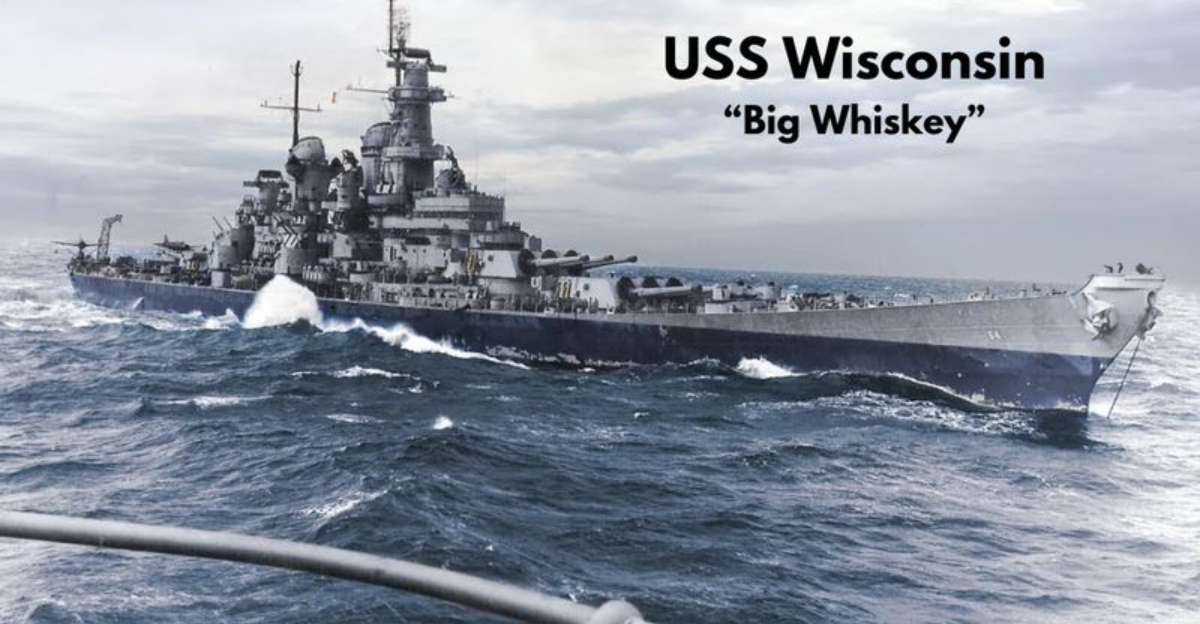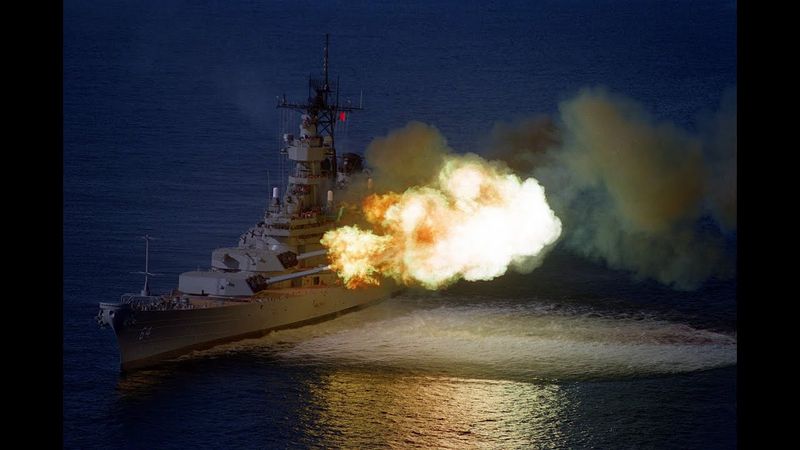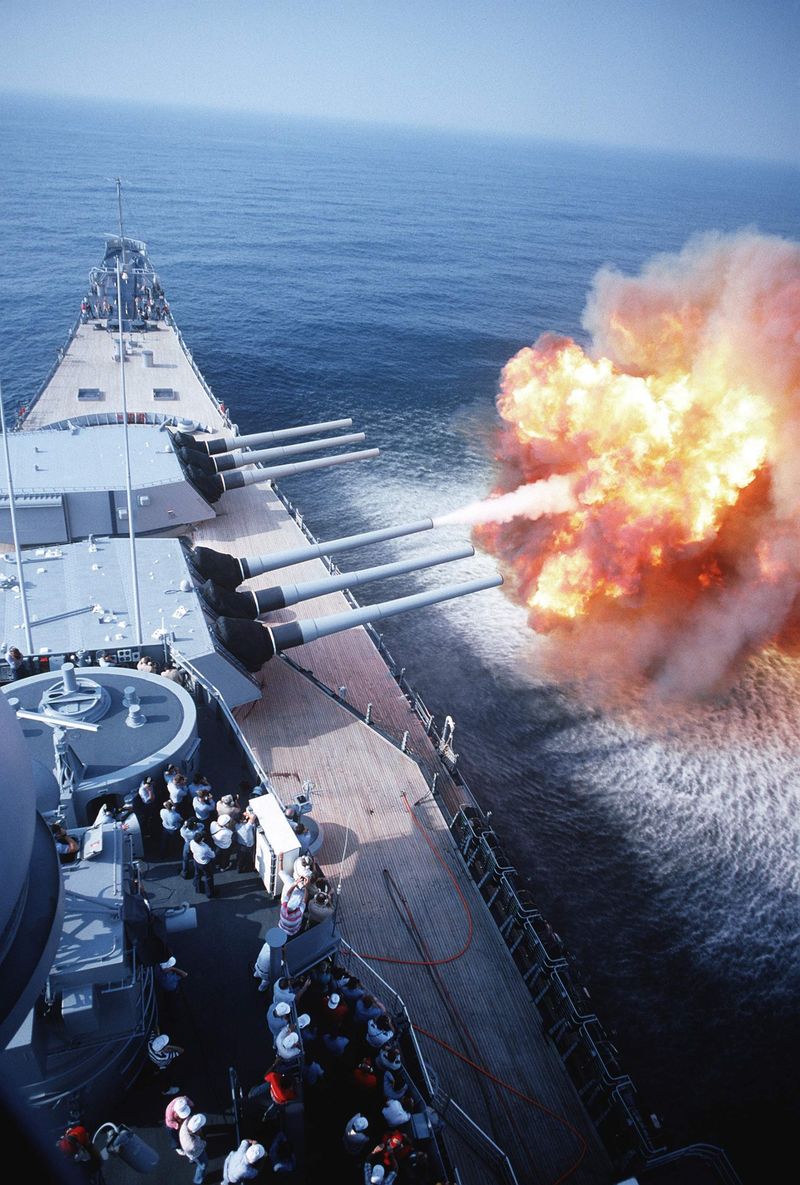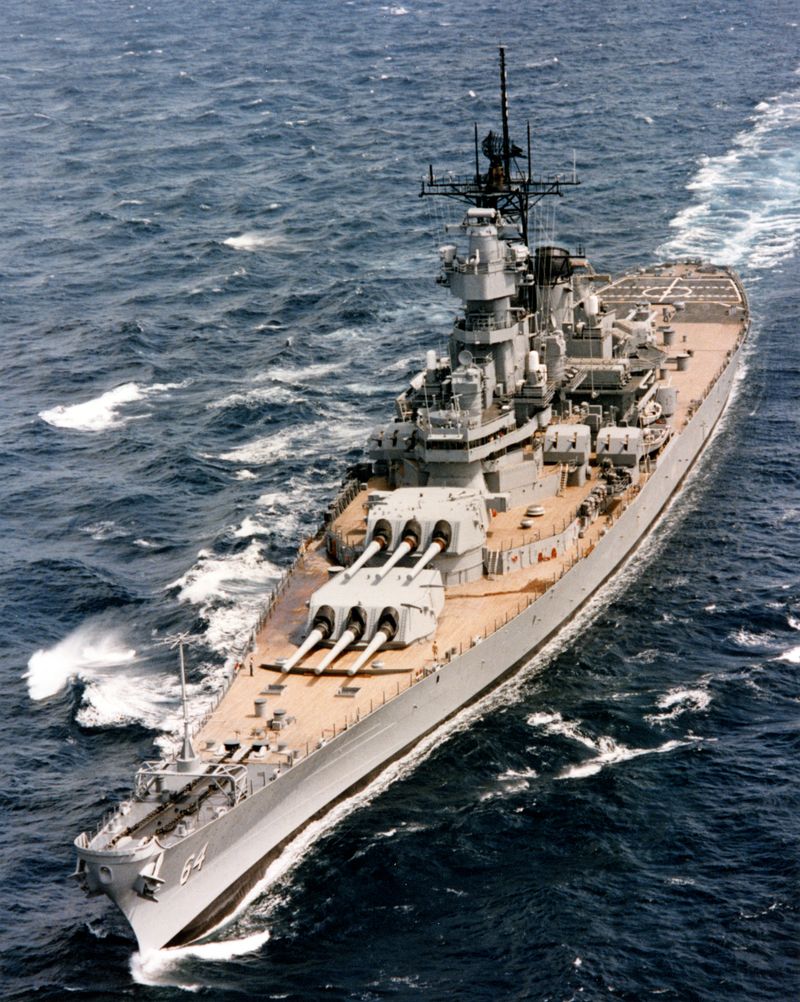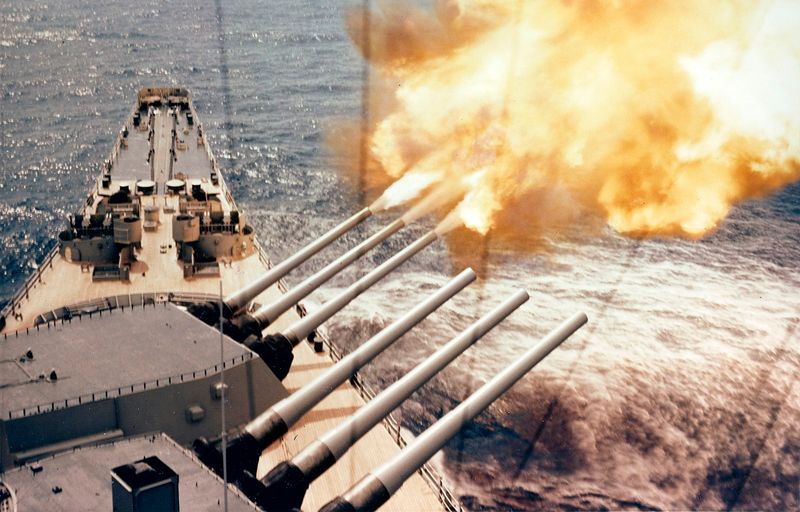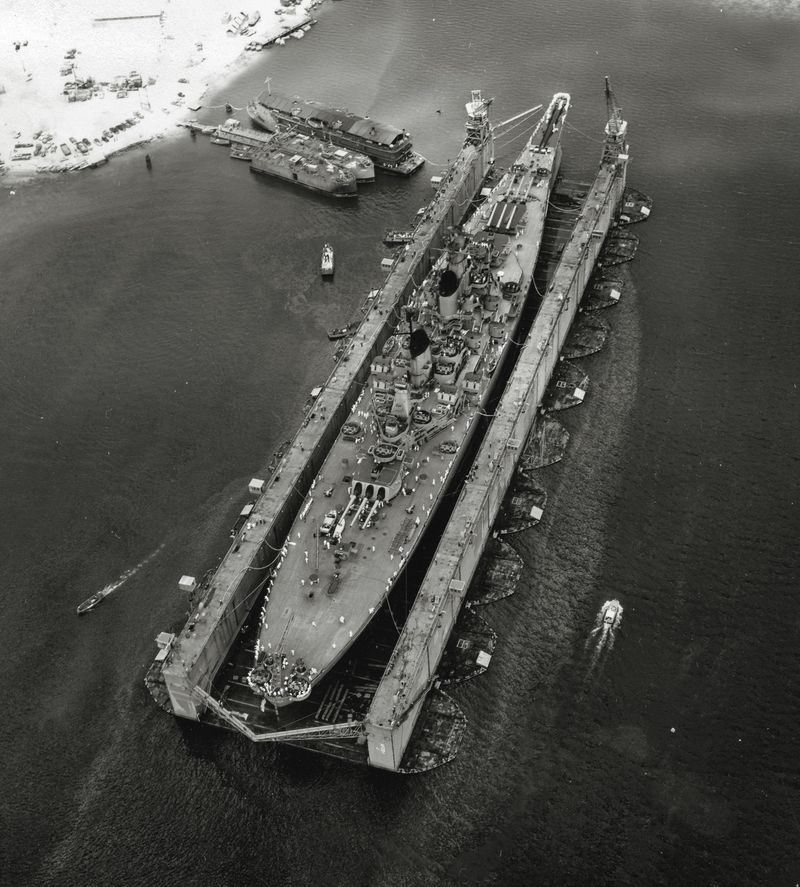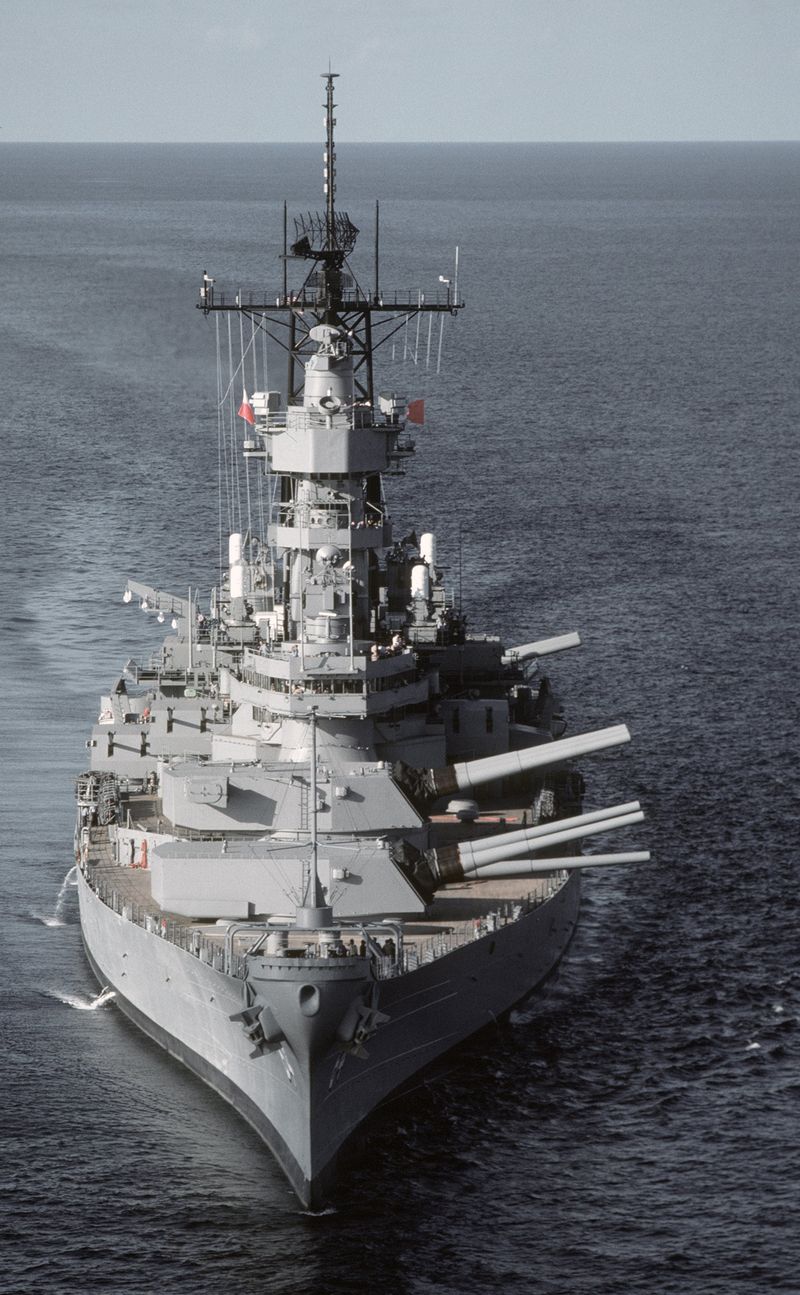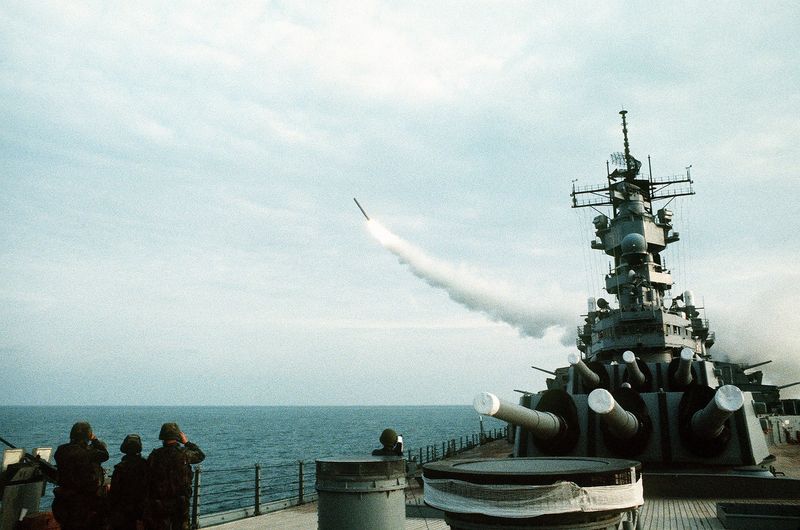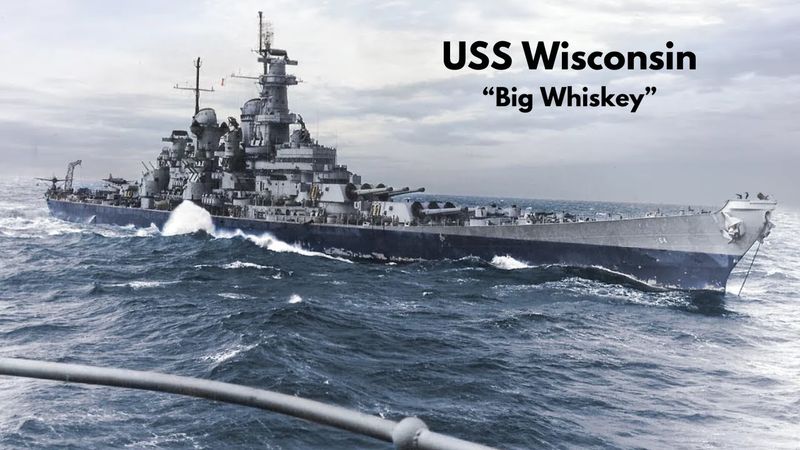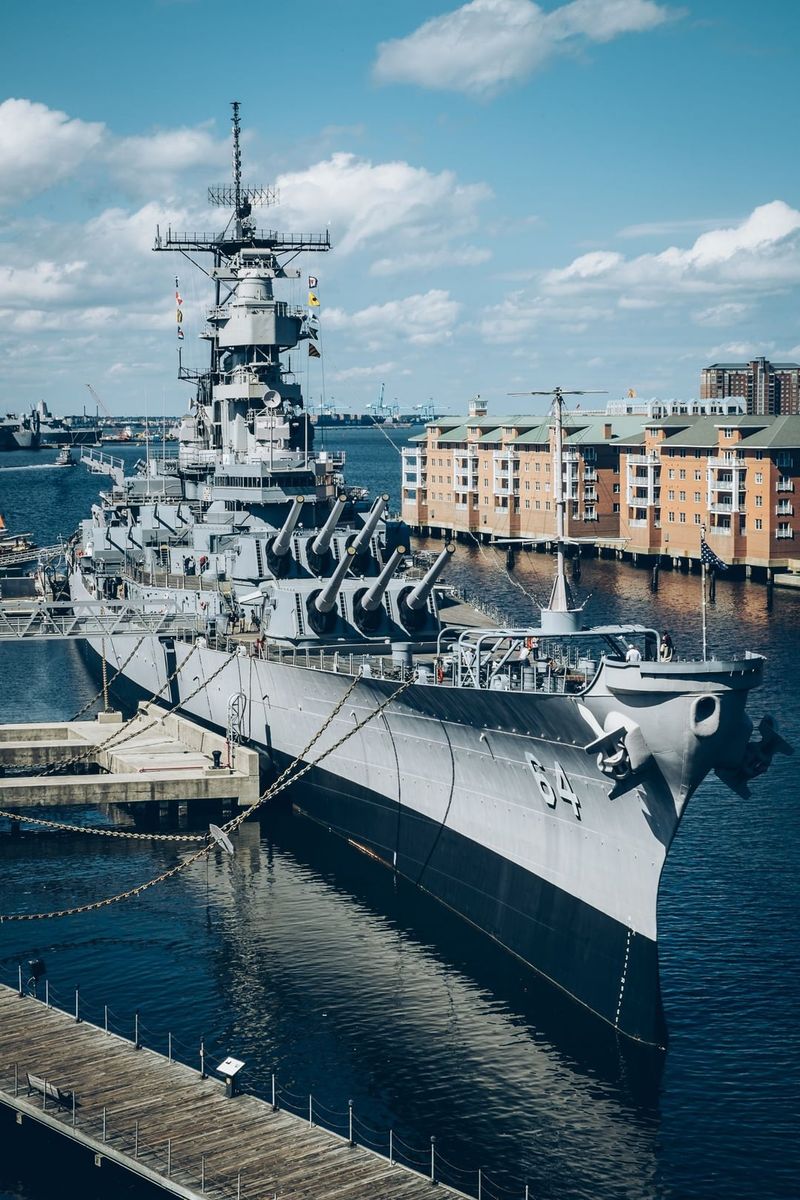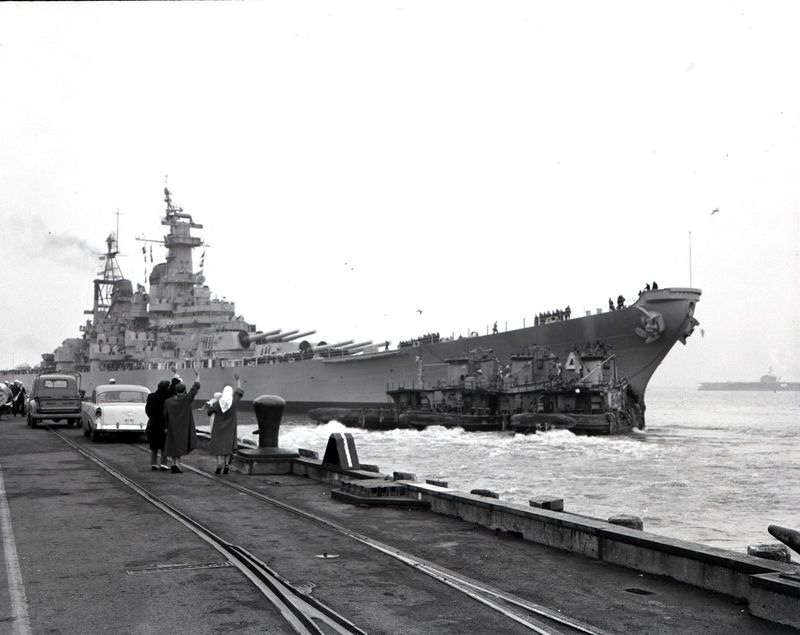The USS Wisconsin, an emblem of naval might and resilience, faced a rare encounter during the Korean War.
This event, where North Korea managed to hit this formidable battleship, is steeped in history and valor.
Each of these ten facts gives a glimpse into the dramatic episode and the indomitable spirit of “Big Wisky.”
1. USS Wisconsin Was a Floating Fortress
The USS Wisconsin, part of the renowned Iowa-class, was a floating fortress. Equipped with nine 16-inch guns, she could launch 2,700 lb shells over 20 miles. These were among the most powerful naval guns ever mounted.
Her formidable presence on the water was unmatched, a true testament to American ingenuity and naval strength. Built to endure and overpower, the Wisconsin’s design ensured her prominence and effectiveness in any naval theater.
Such firepower meant she held her ground as a symbol of power, always ready to face any challenge that came her way.
2. The Hit Was a 155mm Artillery Shell
In March 1952, the USS Wisconsin was hit by a 155mm artillery shell from a North Korean shore battery. It was a rare feat to strike such a heavily armored ship. Despite the effort, the shell caused only minimal damage.
The thick steel armor of the Wisconsin absorbed the blow, barely registering a scratch. This incident highlighted both the precision required to hit a moving battleship and the resilience of the Wisconsin’s construction.
Even under fire, she remained a steadfast symbol of naval supremacy and durability, unyielding and ready to retaliate.
3. No U.S. Casualties Were Reported
Remarkably, the artillery hit did not result in any casualties among the crew of the USS Wisconsin. The shell struck the port side, damaging some fittings but leaving the sailors unharmed.
This outcome was a testament to the battleship’s robust design and the training of the crew. The ability to withstand such an attack without loss of life underscored the effectiveness of American naval engineering.
Onboard, the sailors continued their duties, demonstrating the calm professionalism expected on such a formidable vessel. The incident was a minor blip in their enduring mission.
4. Wisconsin’s Response Was Swift and Brutal
The response of the USS Wisconsin to the artillery hit was immediate and overpowering. She locked onto the coordinates of the attacking battery and unleashed a full salvo from her 16-inch guns.
The retaliation was swift, obliterating the enemy position with undeniable force. This display of might demonstrated the power and precision of the Wisconsin’s main battery.
Her ability to respond so effectively served as a stark warning to any adversaries considering similar actions. The message was clear: any attack on the Wisconsin would be met with overwhelming force and determination.
5. It Was Her First Combat Damage Since WWII
Since her launch in 1943, the USS Wisconsin had seen extensive service during World War II without being significantly damaged. The artillery hit in 1952 marked the first time she had been struck in combat since the war.
This incident underscored the rarity of such an event, given her history of resilience and strategic importance. Her ability to continue her mission unimpeded after the hit highlighted the durability and design excellence of the Iowa-class battleships.
Even after decades of service, the Wisconsin remained a formidable force in naval warfare, undeterred by the challenges of combat.
6. The Impact of Her Guns Was Devastating
When the USS Wisconsin fired her 16-inch guns, the impact was devastating. Each shell could create a crater 30 feet wide and 15 feet deep. The North Korean battery stood no chance once Wisconsin unleashed her fury.
Her retaliatory strike served as a reminder of the sheer destructive power of battleship artillery. The damage inflicted was immediate and overwhelming, effectively neutralizing the threat.
This formidable display of naval firepower was a testament to the strategic advantage held by the Wisconsin. Her guns were not just tools of war, but instruments of deterrence and supremacy.
7. Wisconsin Was Supporting UN Ground Troops
During the Korean War, the USS Wisconsin was part of a naval task force providing crucial support to United Nations troops. Her role involved shore bombardment, aiming to disrupt enemy positions and protect allied forces on the ground.
This support was vital in several operations, ensuring the effectiveness of UN missions. The Wisconsin’s ability to deliver precise and powerful strikes from the sea was invaluable, showcasing the synergistic relationship between naval and ground forces.
Her presence off the coast was a reassuring sight for the troops, knowing they had formidable support from the sea.
8. “Big Wisky” Was a Symbol of Naval Power
Nicknamed “Big Wisky,” the USS Wisconsin was more than just a battleship; she was a symbol of American naval power. Her presence on the seas represented the strength and capability of the United States Navy.
The battleship’s design, armament, and service history made her a powerful deterrent and a source of national pride. Allies admired her, while adversaries respected her might.
Her reputation as a formidable force was well-earned, and she served as a reminder of the military prowess of the United States. Big Wisky’s legacy continues to inspire to this day.
9. A Rare Naval Duel in the Jet Age
The artillery duel involving the USS Wisconsin was one of the last major surface-to-shore confrontations of its kind. By the 1950s, naval warfare was transitioning toward aircraft carriers and missiles.
This engagement highlighted a turning point in military strategy, where battleships played a diminishing role on the modern battlefield. Despite the changing tides of warfare, Wisconsin’s performance in this rare duel showcased the enduring relevance of battleship power.
Her involvement in such a unique engagement underlined the evolution of naval tactics and the continued importance of traditional naval might.
10. Her Legend Only Grew After the Incident
Following the artillery incident, the legend of the USS Wisconsin only grew. Her ability to take a hit and respond with overwhelming force became part of U.S. Navy lore.
This story added to her already illustrious history, capturing the imagination of those who heard it. The Wisconsin’s legacy was cemented as a symbol of resilience and strength.
Her story is retold in naval circles and beyond, a testament to the enduring spirit of the battleship and her crew. Big Wisky continues to inspire, a lasting icon of naval excellence and determination.
